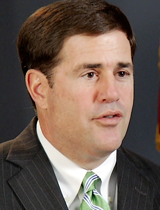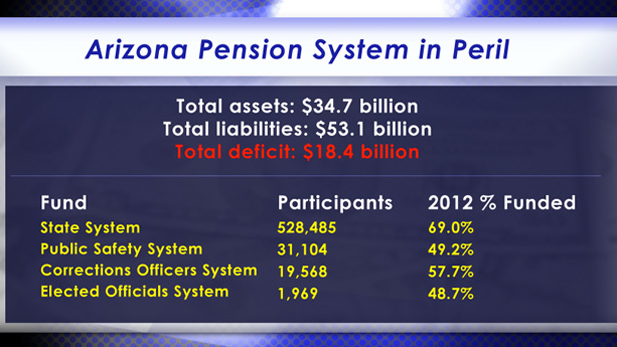Arizona legislative action to deal with the state's underfunded public-employee retirement system is lacking, says one leading legislator, who adds that the system should not be "platinum."
A December 2012 state report showed that the four public pension funds were $18.4 billion short of covering their liabilities.
The funds, paid for in part by governmental employees and in part by taxpayers, totaled $34.7 billion in assets last year, but were responsible for $53.1 billion in payouts to current and future retirees, the report says.
 State Rep. John Kavanagh, R-Fountain Hills.
State Rep. John Kavanagh, R-Fountain Hills."If public employees want to have this fantastic benefit, we're going to have to scale it way back," said Rep. John Kavanagh, R-Fountain Hills and chair of the House Appropriations Committee. "I don't think taxpayers will tolerate, nor should they tolerate, these platinum public pension plans , especially in today's economic struggling times."
Kavanagh, in an interview for Friday's Arizona Week broadcast, said he has attempted to introduce reform to the system, especially to prevent "spiking," that is, building up the last two or three years of a public employee's salary, on which the pension payments are based.
"I couldn't get them put onto our reform legislation, and that's why I've just come to the point where, let's just get rid of these public pensions for new people, because we seem incapable of putting even reasonable restraints on them," Kavanagh said. "And when we do, the courts overturn us."
He was referring to a 2012 state Supreme Court decision that struck down the Legislature's shifting of 3 percent of pension costs to employees, and to two lawsuits now working their ways through the system, one by judges and another by public safety officers, both fighting changes to their pensions .
While Kavanagh said he considers the public pension system in Arizona to be "in dire fiscal straits," State Treasurer Doug Ducey said he would not call the situation a crisis.
 Gov. Doug Ducey.
Gov. Doug Ducey."When I say not in crisis, I mean that we can afford to pay our bills today and tomorrow," Ducey said in an interview for Arizona Week. "It's really the day after tomorrow that I'm concerned with."
Ducey, who headed the state committee that did last year's pension report, said public employees hoping to retire in the next few years should have no problem getting their guaranteed retirement benefits from the state, but those who have recently joined the workforce and are expecting to retire in 10 years or more should be wary.
The funds cover state and county governmental workers, municipal workers in all but Tucson and Phoenix, public safety officers including police and firefighters, corrections officers and elected officials and judges. Tucson and Phoenix maintain their own retirement systems, and both cities have reported funding problems similar to the state's.
Depending on the funds, employees pay anywhere between 5 percent and 11 percent of their salaries into the funds, and the state provides anywhere from 11 percent to 32 percent as a match to meet a guaranteed levels of retirement income.
Craig Harris, who has reported and written extensively on the public pension system in the state for the Arizona Republic, said in an Arizona Week interview that the issue with the fund is two-fold: poor investment performance and generous, constitutionally protected benefits. See Harris' stories here.

"The biggest issue is that although Arizona is a right-to-work state, Arizona actually has one of the strongest protections for public pensions and public employees," Harris said. "The state Constitution says that public pensions cannot be diminished or devalued in any way whatsoever. So in order to make any significant changes to the pension system in Arizona, you'd have to change the Constitution."
Harris said that route is the way to fundamentally change the system.
"The only real way that you're going to change the pension system, radically change it, is to have a constitutional change," he said. " ... So that's probably the only way you can do it. Otherwise you're going to have continual lawsuits challenging any changes that have gone through the Legislature."
In Arizona, a constitutional amendment requires a majority vote of the people, and either legislative referral or citizen initiative can get it onto the ballot.
 Source: Arizona Retirement Study Committee Report.
Source: Arizona Retirement Study Committee Report.

By submitting your comments, you hereby give AZPM the right to post your comments and potentially use them in any other form of media operated by this institution.